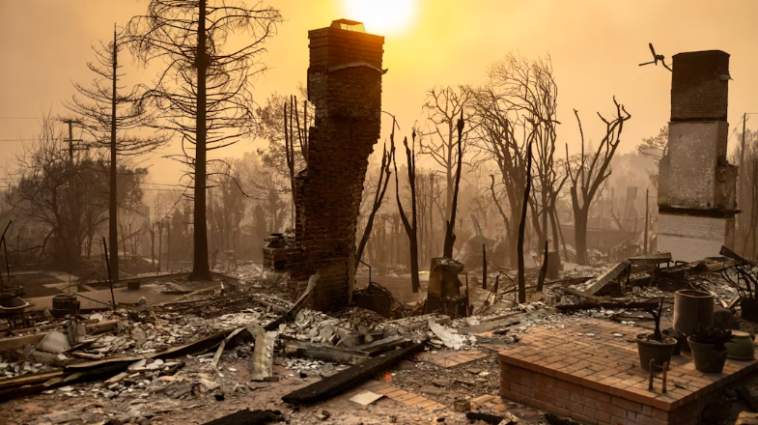The catastrophic wildfires raging across Los Angeles and surrounding areas have caused an estimated $52 billion to $57 billion in economic damages, marking them as potentially the costliest wildfire disaster in U.S. history. These fires, including the Palisades and Eaton Fires, have left widespread devastation in their wake, highlighting the mounting risks posed by climate change, urban sprawl, and inadequate emergency preparedness.
Total damage from the devastating wildfires scorching So Cal could amount to between $135 billion to $150 billion, nearly 4% of the annual GDP of the state of California according to AccuWeather, a private company specializing in weather data. pic.twitter.com/nsjneu1hs9
— Tim Conway Jr Show (@ConwayShow) January 10, 2025
Unprecedented Scale and Impact
Since igniting on January 5, the wildfires have destroyed nearly 10,000 structures, displaced over 300,000 residents, and scorched approximately 85,000 acres. Entire neighborhoods in affluent areas like Pacific Palisades, Malibu, and the Hollywood Hills have been reduced to ash. Emergency services report that at least 14 people have lost their lives, with dozens more injured.
Economic Toll
The fires’ economic damage includes:
- Property Losses: Destroyed homes, businesses, and infrastructure account for a significant portion of the estimated damages.
- Insurance Claims: Experts predict insurance losses could exceed $20 billion, making this disaster a major blow to the insurance industry.
- Business Disruptions: Closures of businesses, including high-profile entertainment industry hubs, are expected to result in millions in lost revenue.
Strained Emergency Resources
The Los Angeles Fire Department (LAFD) has been stretched to its limits, with over 3,000 firefighters battling the blazes. Firefighting aircraft have been grounded multiple times due to hurricane-force winds, which have spread embers far beyond containment zones. LAFD Chief Kristin Crowley has described the conditions as “unlike anything we’ve ever faced.”
Federal and State Response
President Joe Biden has declared a major disaster, unlocking federal resources to aid in the response and recovery efforts. Federal Emergency Management Agency (FEMA) teams are on the ground, coordinating with state and local officials.
California Governor Gavin Newsom has faced sharp criticism for the state’s preparedness, particularly in light of budget cuts to firefighting resources in recent years. Critics argue that these reductions, coupled with insufficient forest management practices, have exacerbated the scale of the disaster.
Insurance Industry on Edge
The insurance sector is bracing for record-breaking claims. Insurers are already dealing with increased costs from previous disasters, and the high concentration of high-value properties in Los Angeles could further strain their resources.
Root Causes and Future Risks
Experts attribute the intensity of these fires to a combination of factors:
- Climate Change: Prolonged drought and record-breaking heatwaves have created tinderbox conditions across California.
- Urban Development: Expanding development into wildfire-prone areas has put more people and property in harm’s way.
- Resource Management: Inadequate forest thinning, poor land management practices, and cuts to firefighting budgets have left communities vulnerable.
The Path Forward
California now faces the immense task of rebuilding. Recovery costs, combined with the need to enhance infrastructure and fire prevention measures, could drive the total economic impact well beyond initial estimates. Federal and state authorities are under increasing pressure to implement long-term solutions to mitigate future wildfire risks, including:
- Enhanced early warning systems.
- Increased investment in forest management and wildfire prevention.
- Greater collaboration between local, state, and federal agencies to improve response times.
A Sobering Reminder
These wildfires serve as a stark reminder of the growing challenges posed by climate change and the need for a unified approach to address natural disasters. As California grapples with the immediate aftermath, the state must also confront difficult questions about its readiness for a future where such catastrophes may become more frequent and severe.
View this post on Instagram


